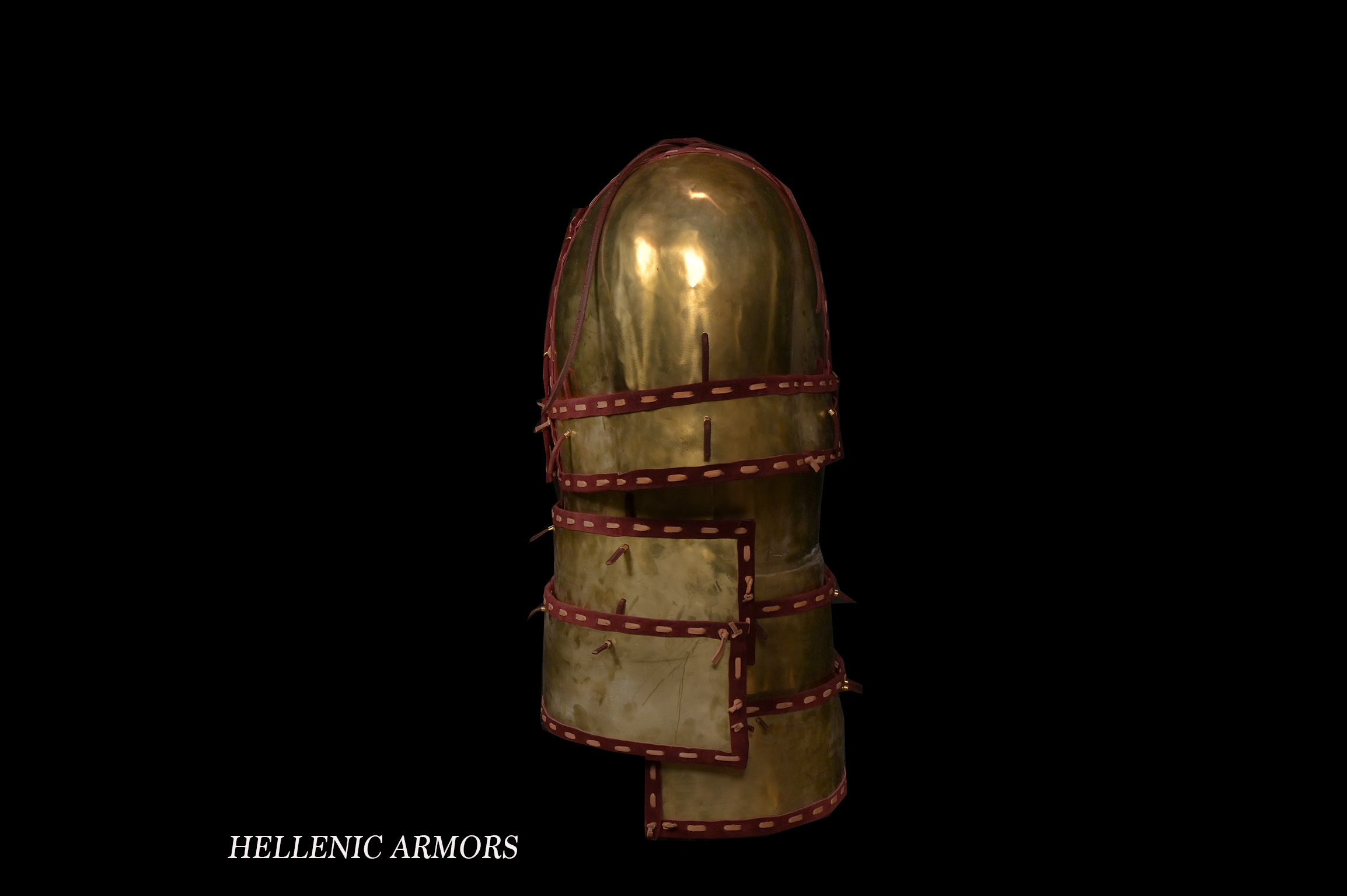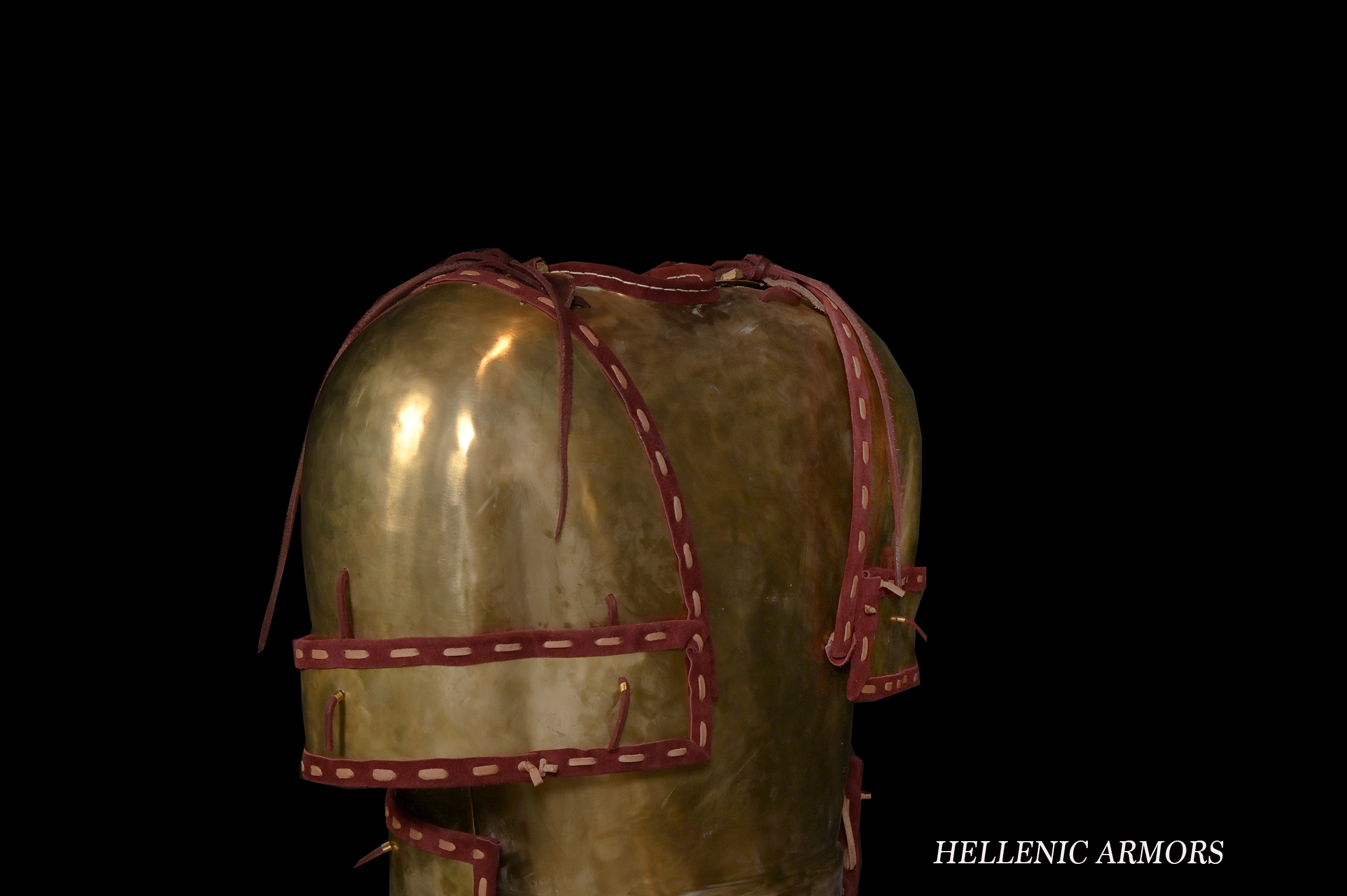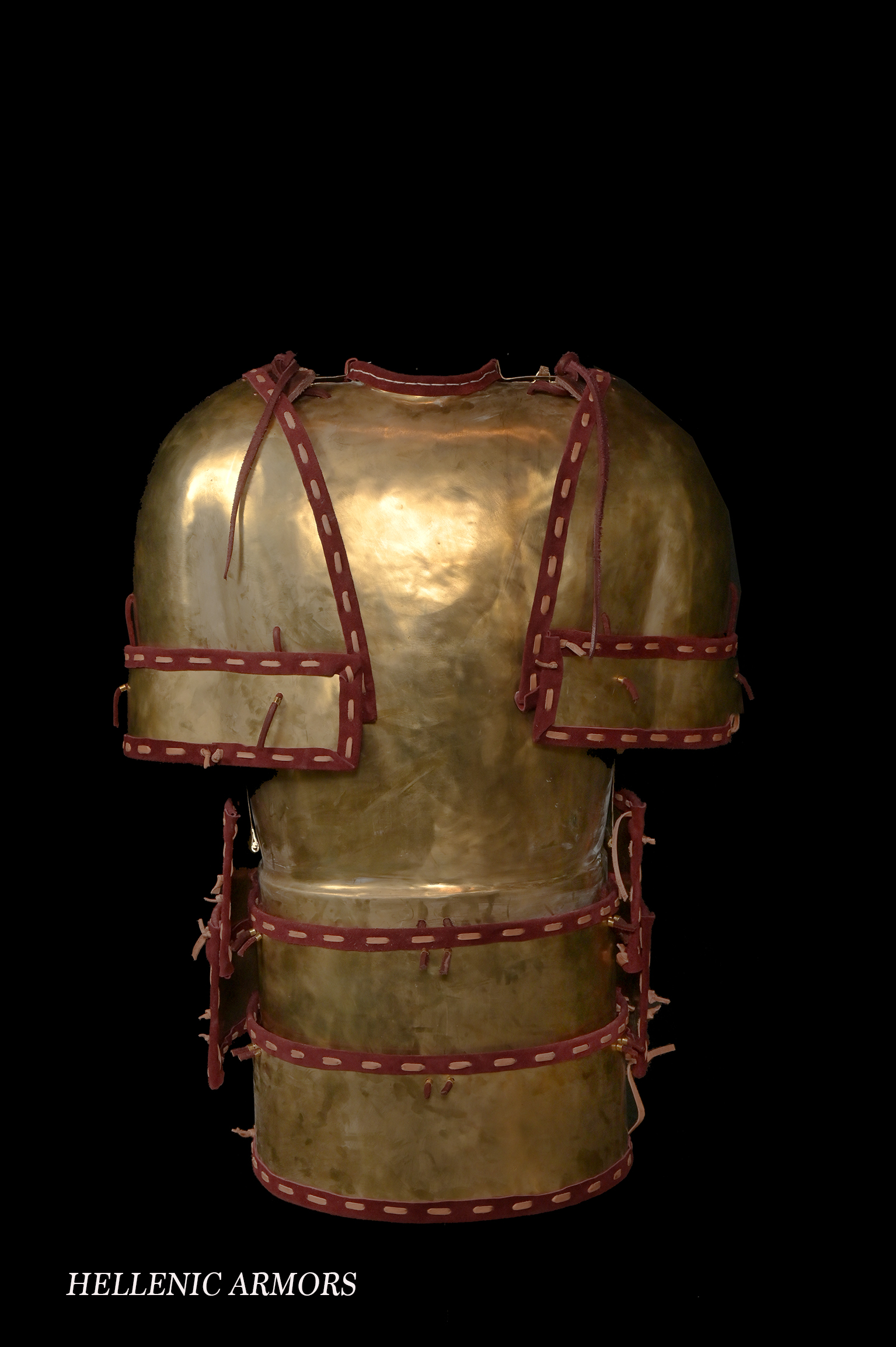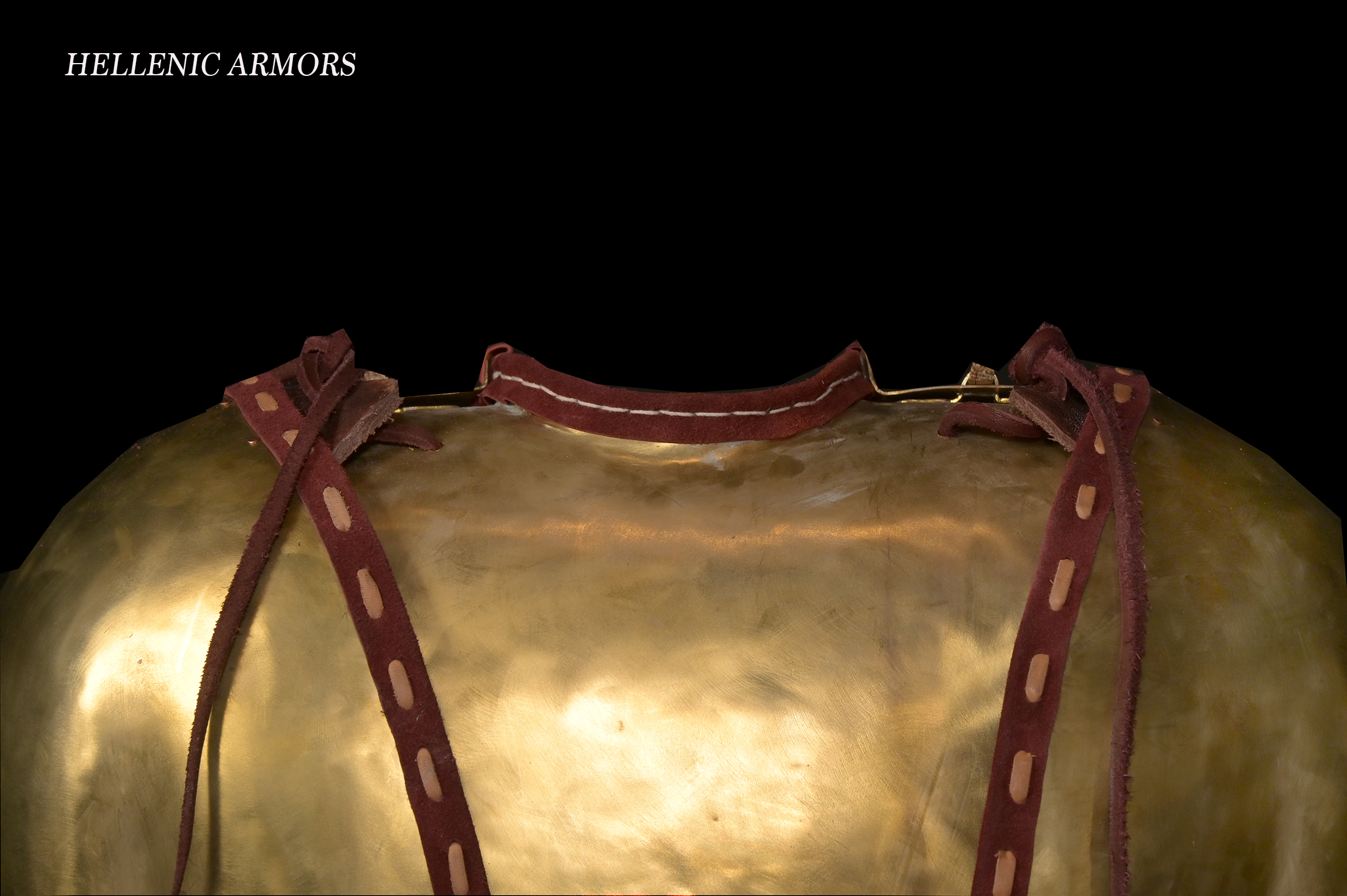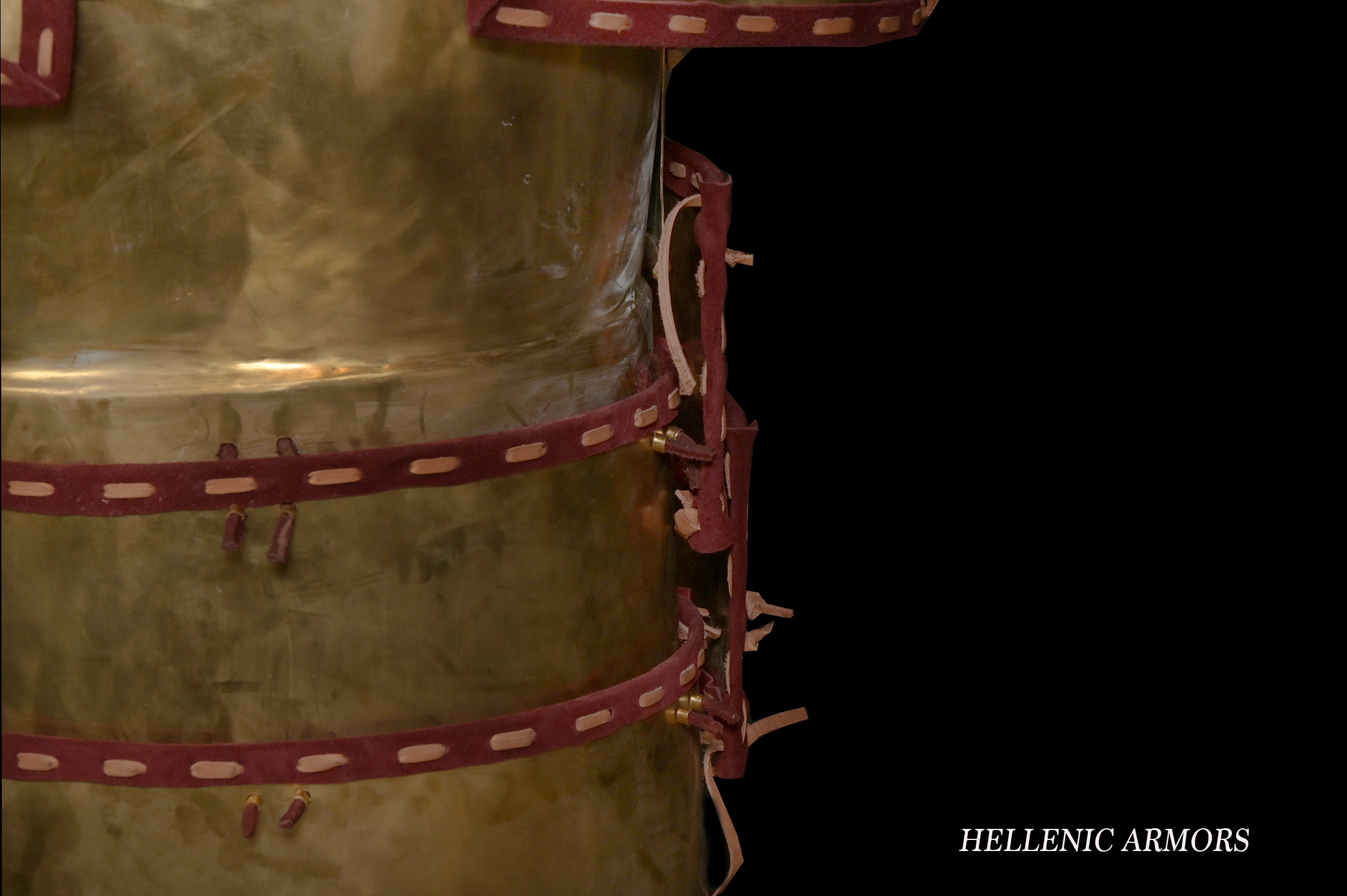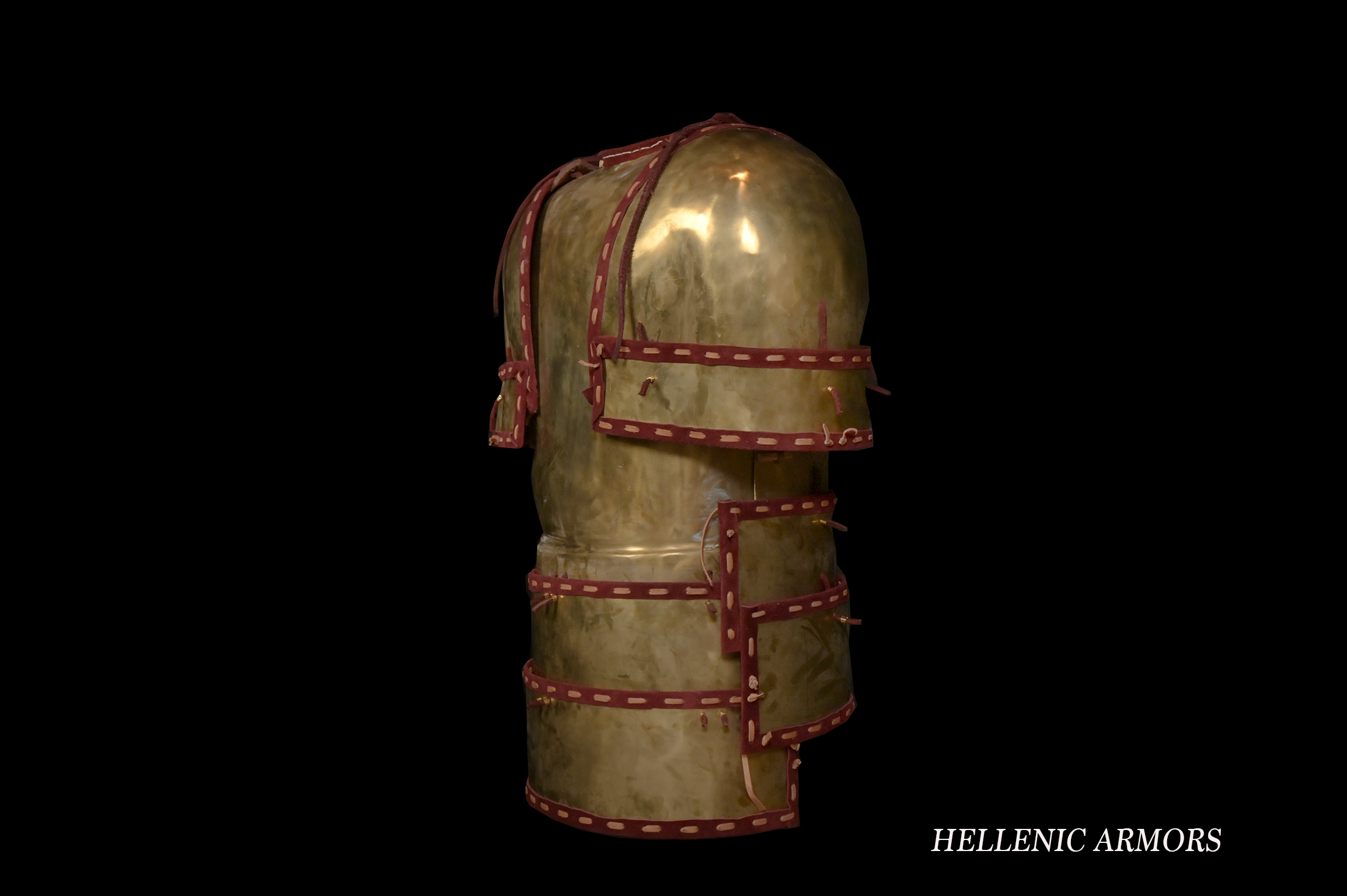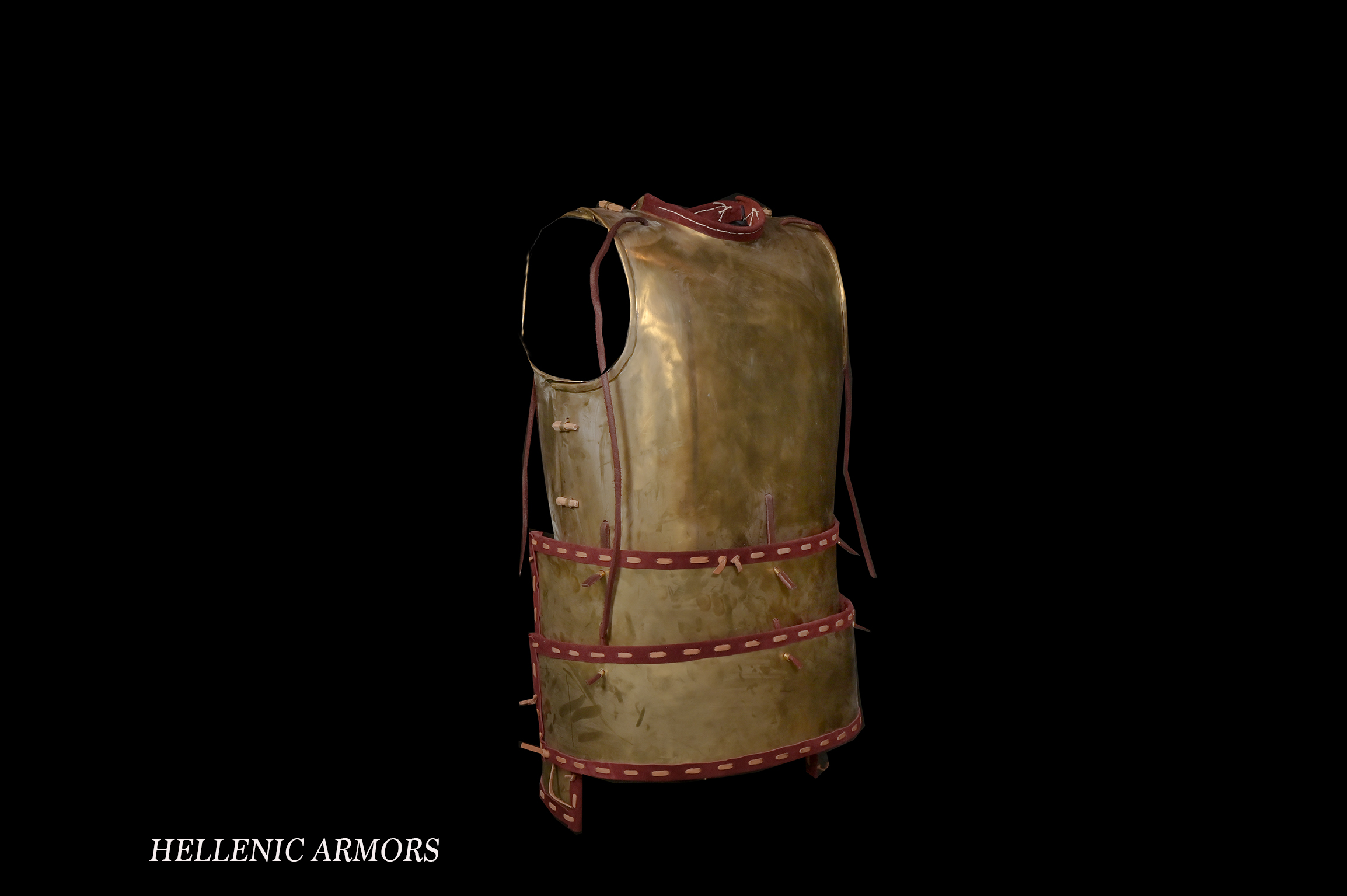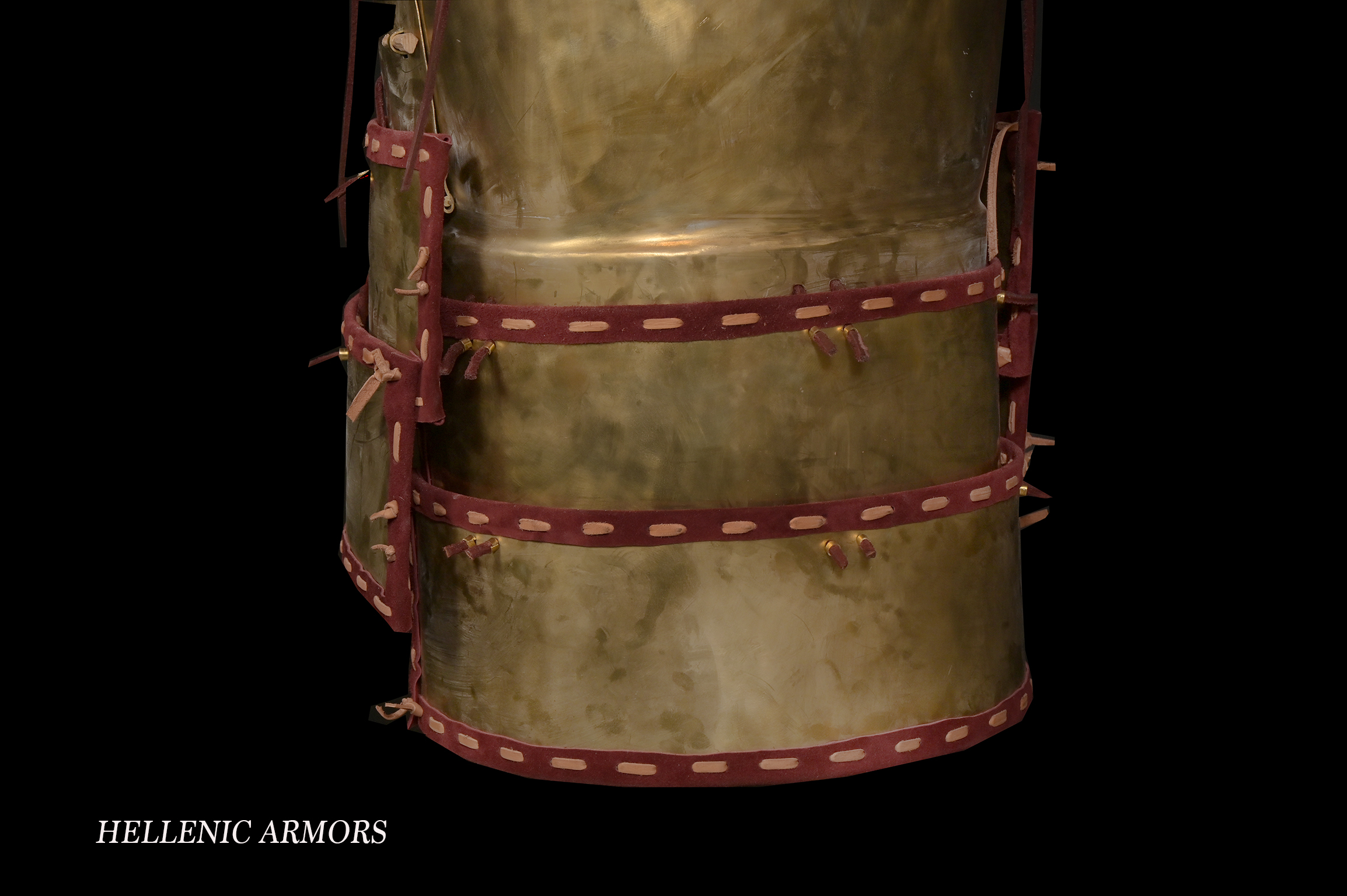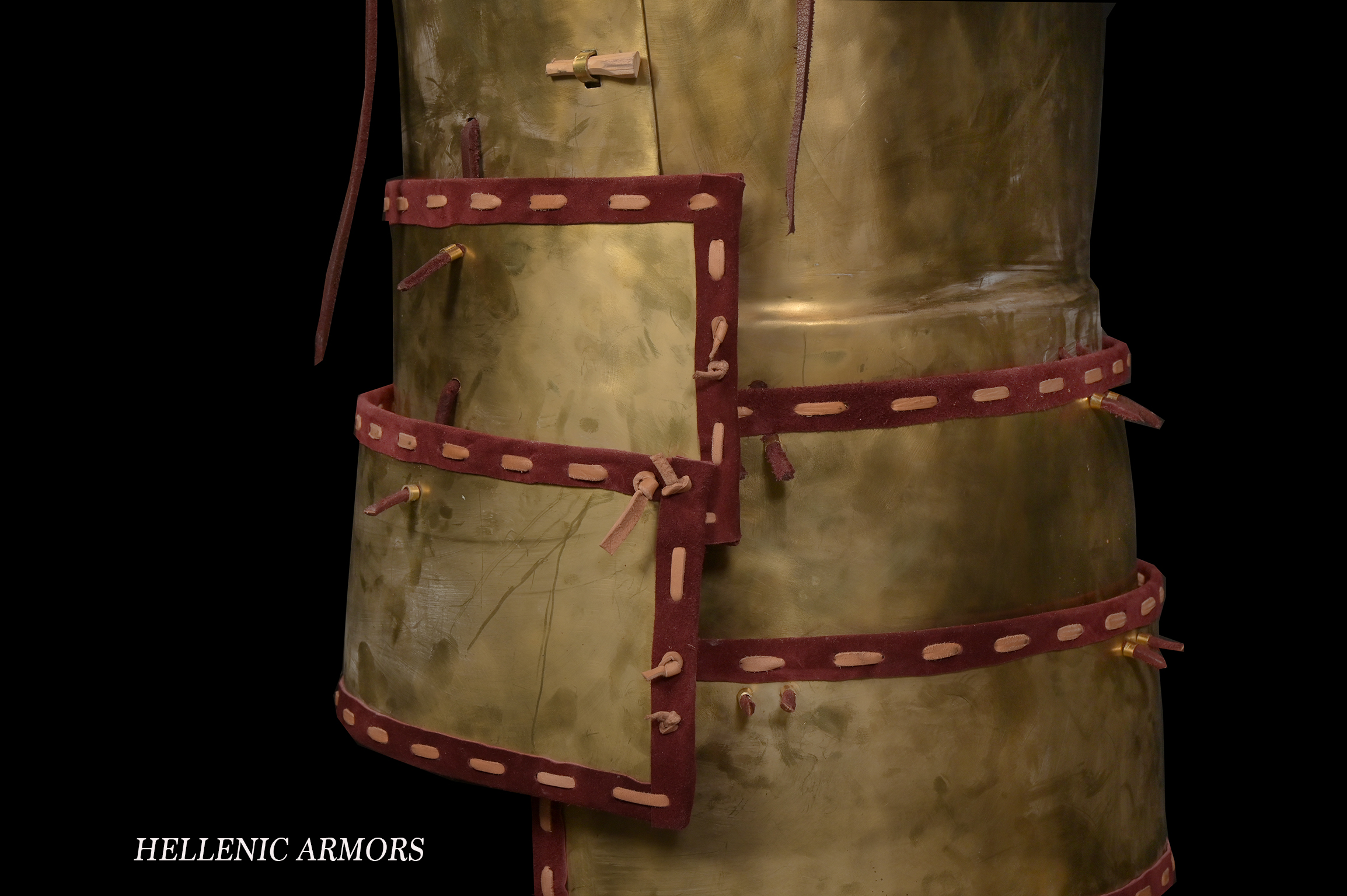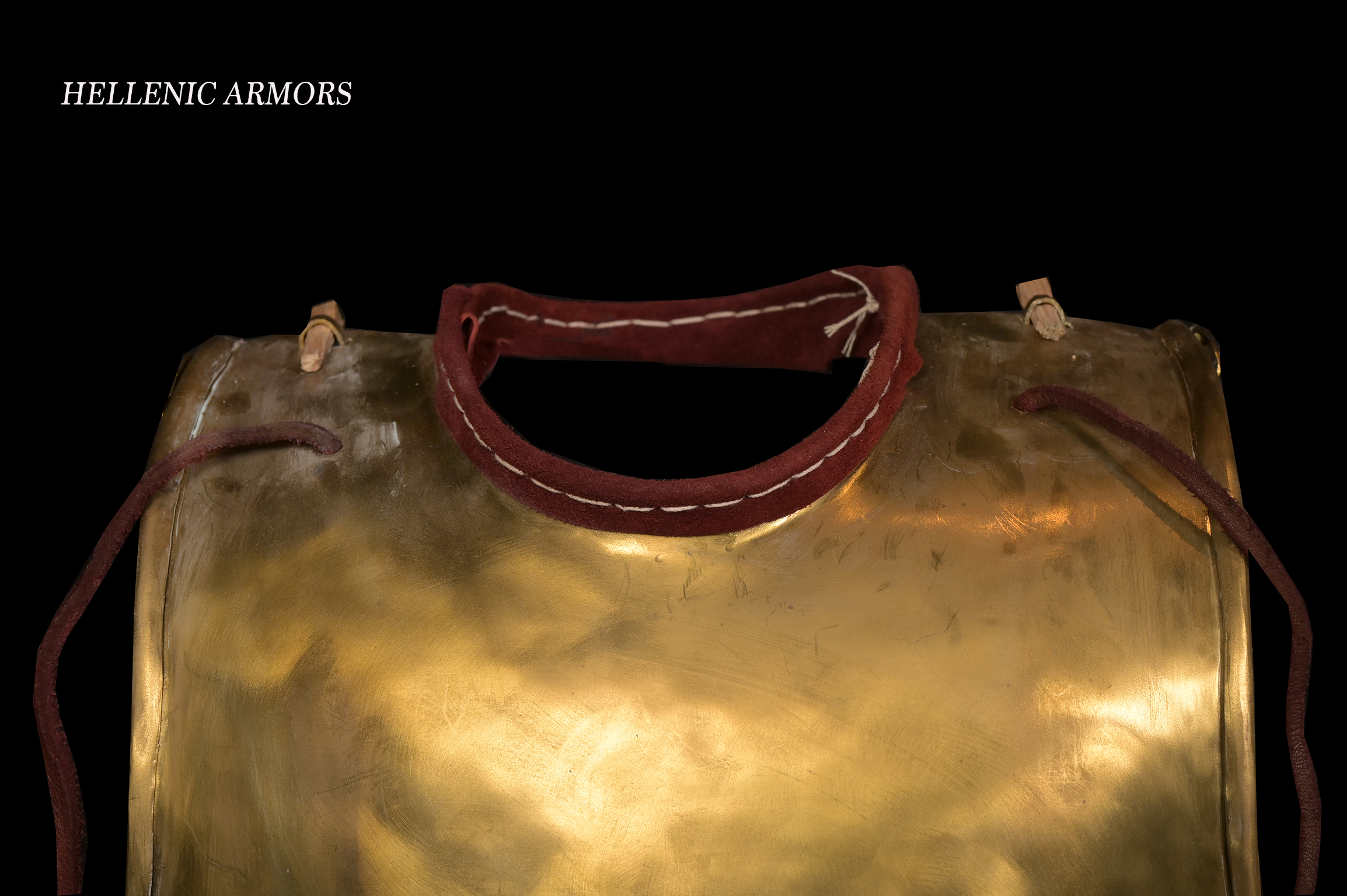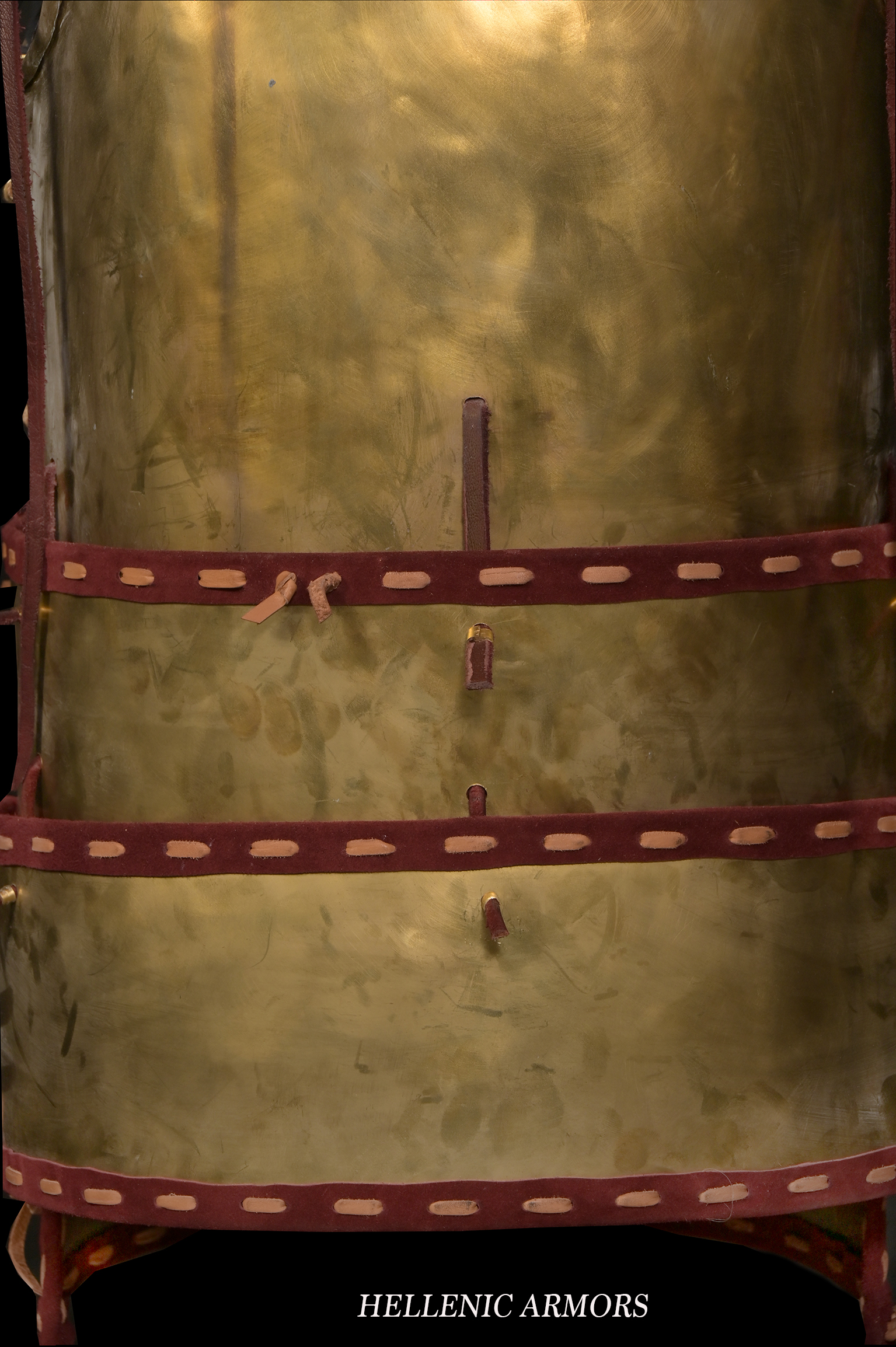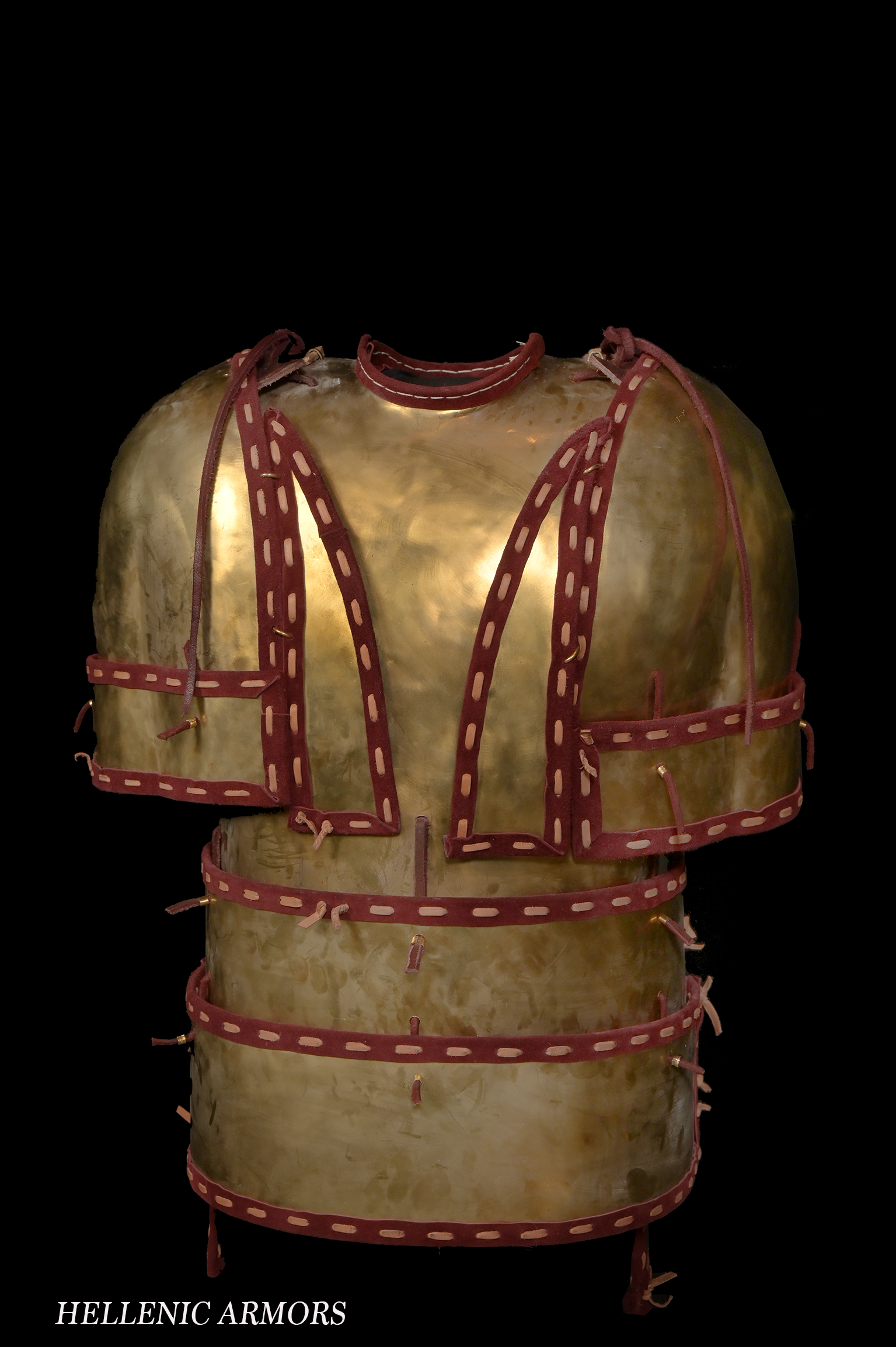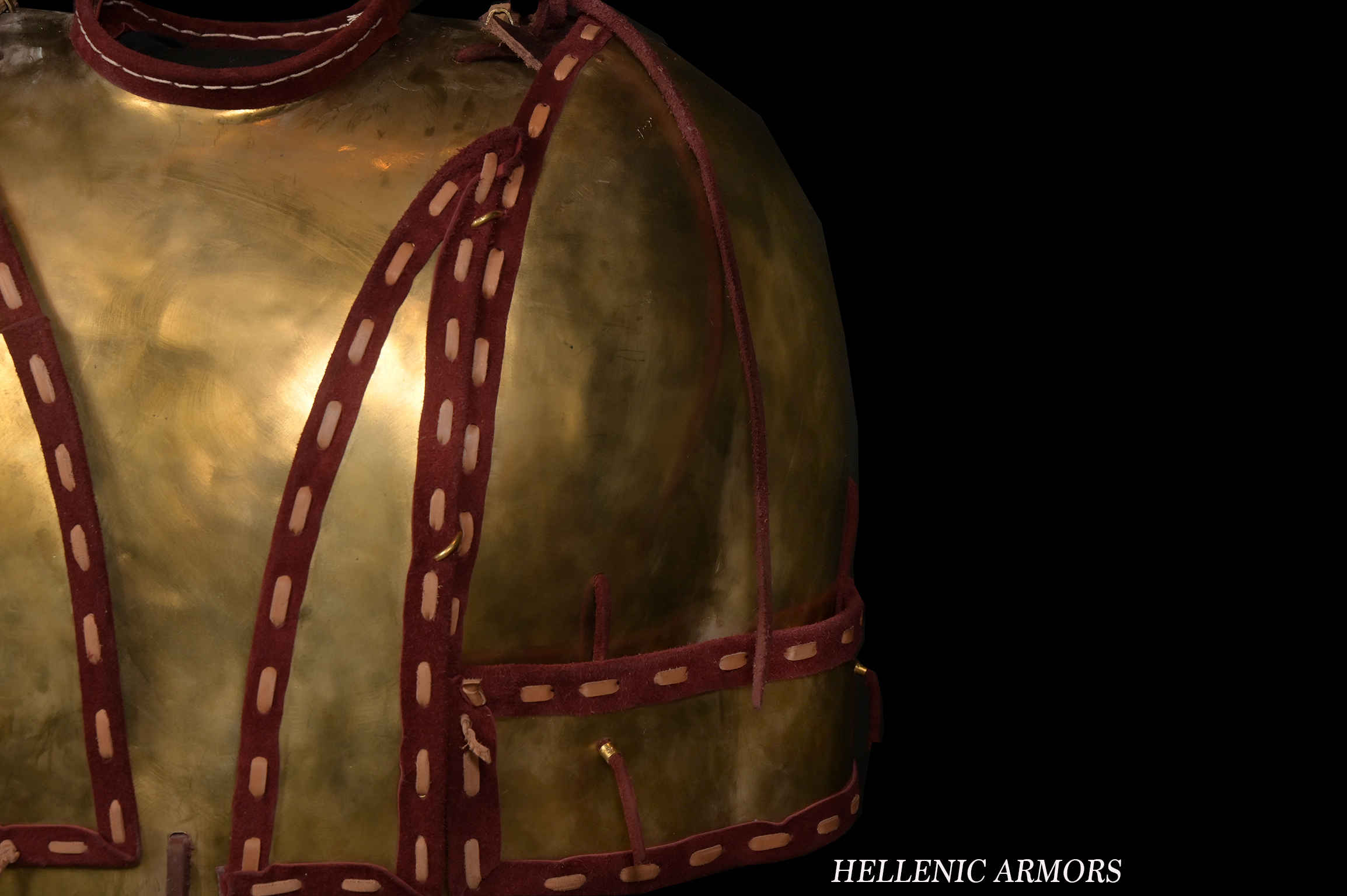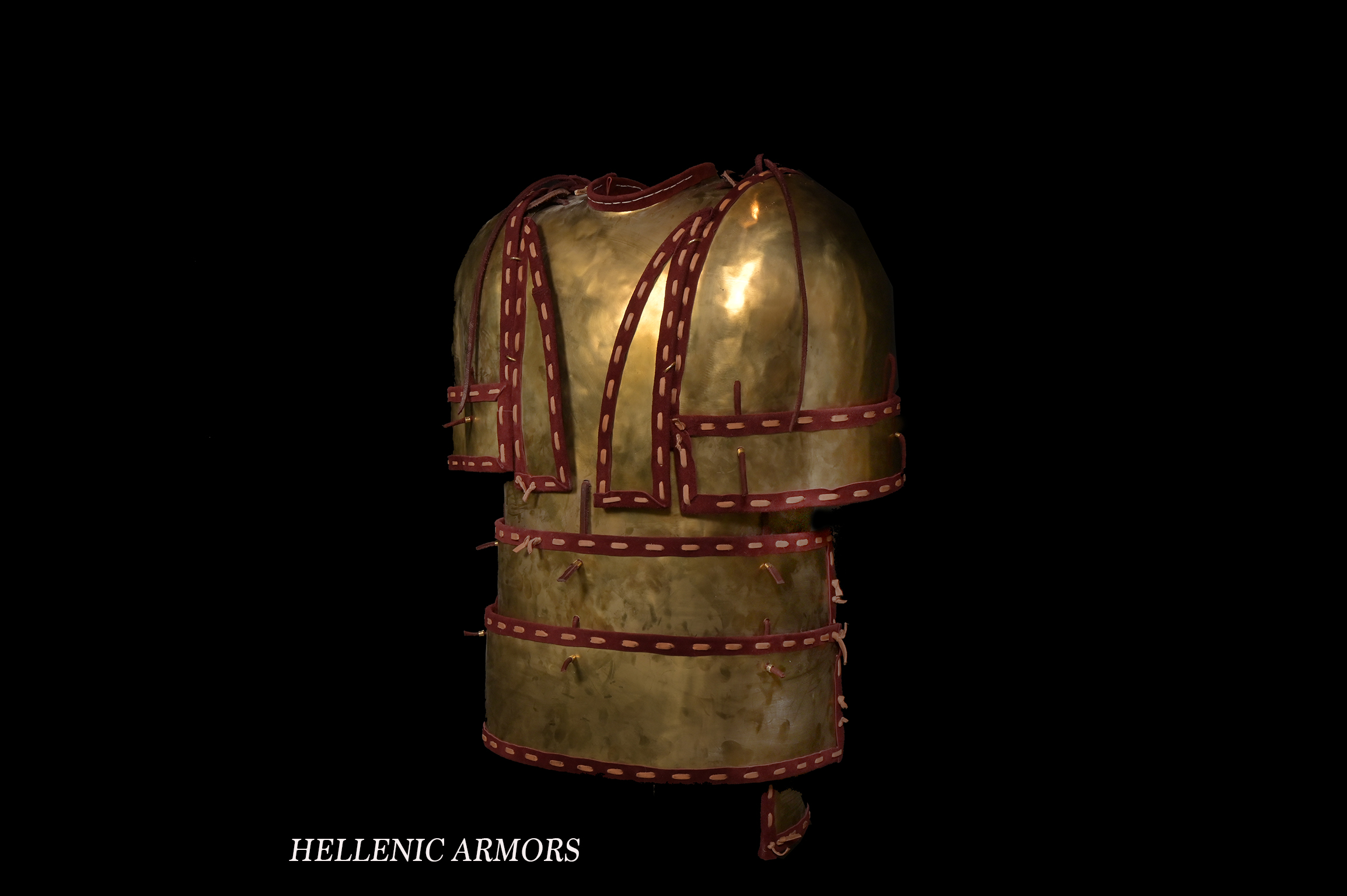Mycenaean Armor
Mycenaean armor of “Thebes” (Greece)
14th -13th century BC
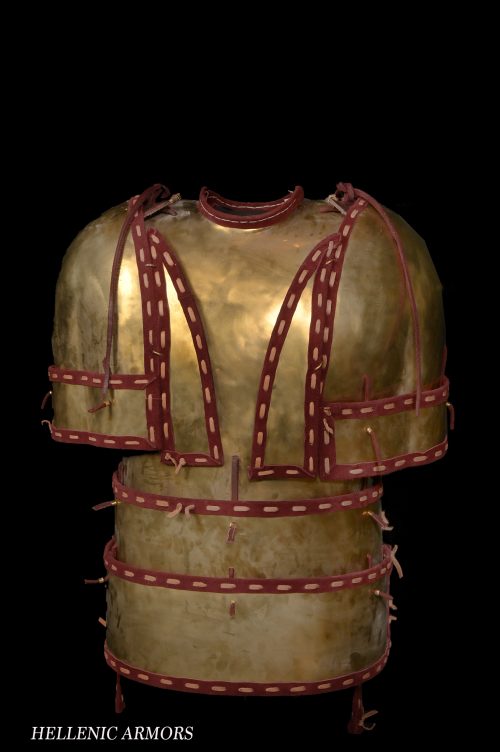
The armor was found at the Mycenaean Palace in Thebes (Central Greece) which is located at the center of the Cadmea Acropolis, an important military and administrative Mycenaean center of the Late Helladic III period (14th-13th century BC) which covered the larger part of the natural hill of the city of Thiva (today city of “Θήβα”).Parts of the palace, which were decorated with wall paintings, were discovered by A. Keramopoullos between 1906 and 1929 and later again between 1963 and 1995 by archaeologists from the 9th Ephorate of Prehistoric and Classical Antiquities.
The armor (“TO -RA -KE” in Linear B’)was excavated at the room of the “Arsenal hall” inside the Palace structure and today is being displayed at the Archaeological Museum of the city of Thebes ( Θήβα).
The pauldrons are sophisticated defensive gears and fortunately they survived almost intacted .Each of them is consisted by three components, the major curved part and two minor bronze sections attached to the major shoulder part with bronze rings (triangular pectoral extension) and leather thongs (horizontal narrow extension sheet).Τhey cover the upper torso area to a large extent and provide sufficient protection at the shoulder and upper arm areas.
The main torso consisted of two bronze plates shaped in a rough anatomical way in order to create a tube like “capsule” able to enclose the torso of the warrior. The selected locking mechanisms that holds together the two plates are based on Π-like bronze receptors located in the shoulder area (two pairs) and to the side abdominal areas (two pairs per each side). The inner surface has been covered with thick woolen and linen padding.
The protection of groin and upper legs/ thighs is achieved by two pairs of horizontal rectangular overlapping bands of bronze sheets, connected together with a system of thick leather laces. At the endings of these four plates appear small holes in order leather material to be successfully attached through stitching.
